Frost Tolerance of Herbs and Vegetables – Planning for Risk of Frost
When there’s a risk of frost in the forecast, it’s good to know the frost tolerance of your herbs and vegetables so you can plan strategically!
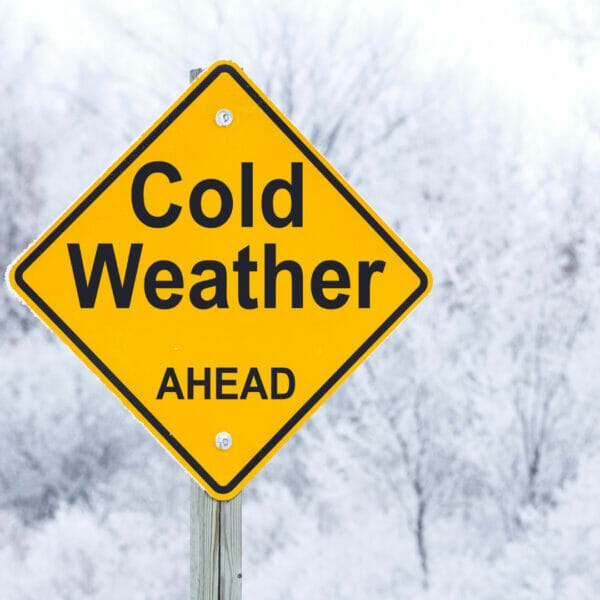
What Exactly is a Frost Warning?
Environment Canada will issue a frost warning when temperatures are expected to be near or below freezing overnight.

The risk of frost is greater if:
- there’s a light wind and no cloud cover
- your garden is in a low valley
- the daytime temps before and after the night are cool 1-4°C (35-39°F)
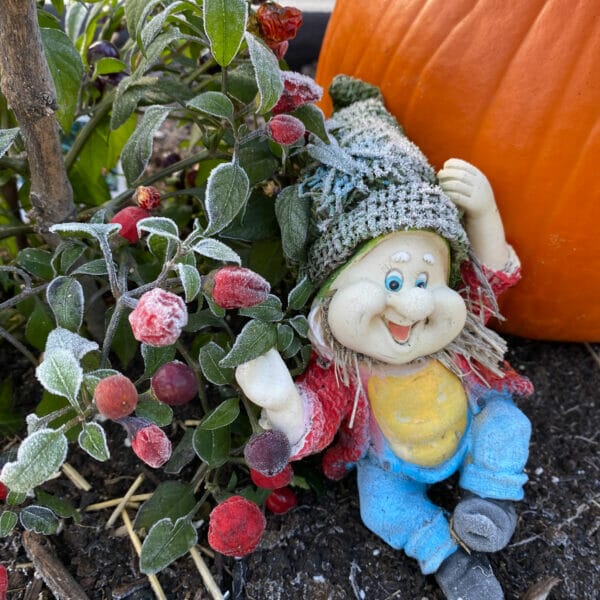
What Does Frost Do to Garden Plants?
Some plants are more sensitive to frost than others. A severe frost is much more damaging than a “light frost”.
Frost freezes the liquid in plants and damages their membranes and cells. The longer the frost lasts at night and the lower the temperature gets, the more severe the damage. We generally classify frost as follows:
- Light fost: -1.7 to 0°C (29-32°F) – kills very sensitive plants
- Moderate frost: -3.9 to -2.2°C (25-28°F) – destroys most above ground vegetation
- Severe frost: -4.4°C (24°F) and colder – heavy damage to most garden plants
If it’s a light frost and there are more warm, sunny days ahead, it’s worth covering plants and keeping them for a few more weeks.
Frost and the big freeze are inevitable in our northern gardens. In fact, you can look up the average first day of frost for your region using the Farmer’s Almanac calculator.
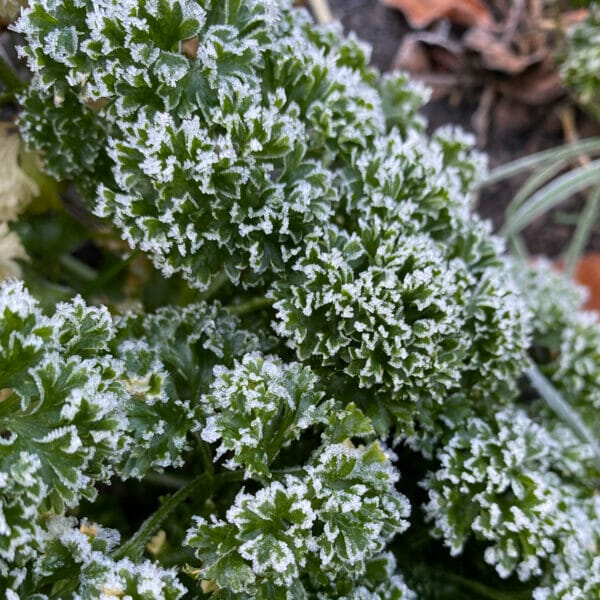
Frost Tolerance of Herbs and Veggies
Here’s a chart that gives an overview of the frost tolerance of common herbs and vegetables.
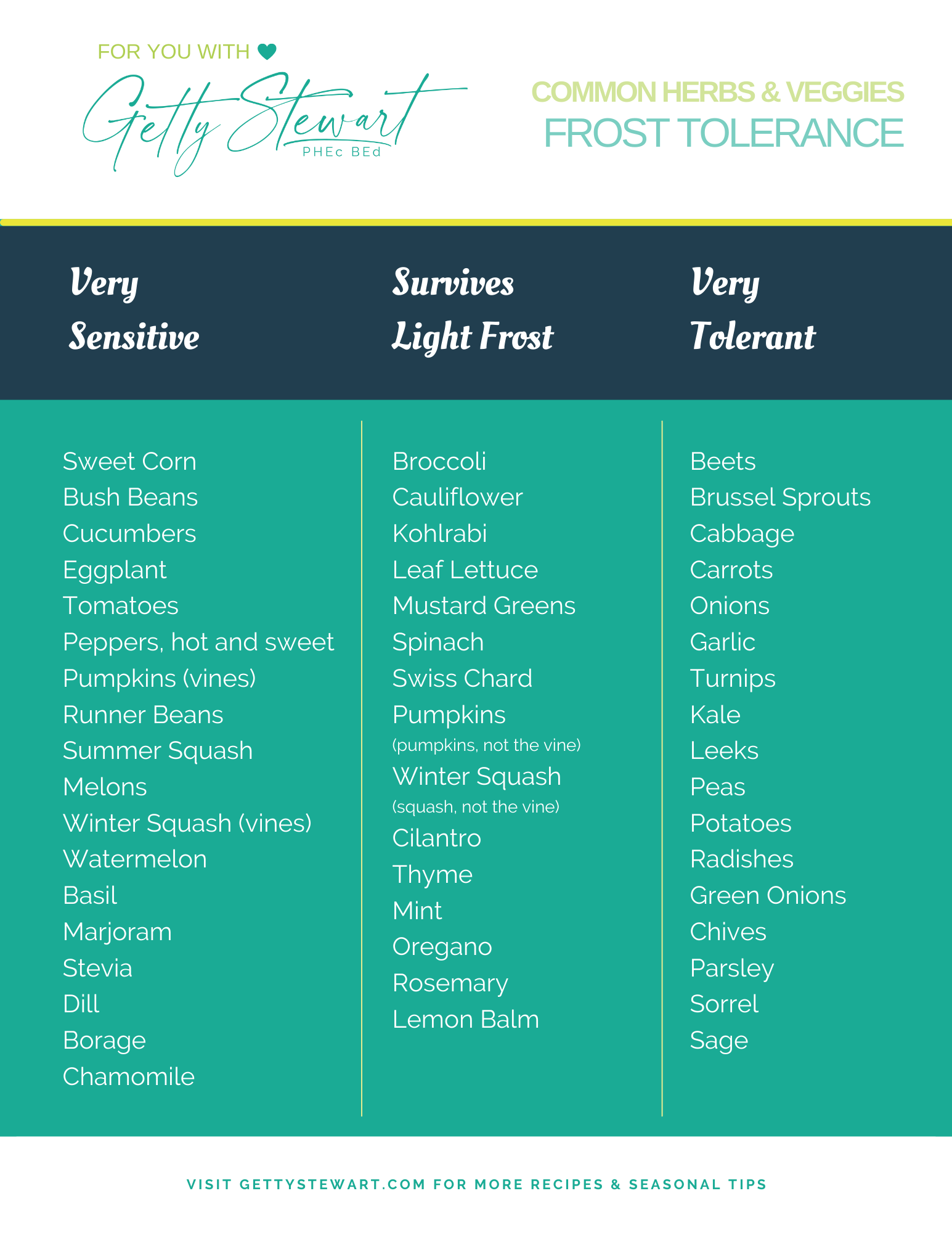
What to Do When There’s a Risk of Frost
1. Assess & Strategize
- Is it early or late in the fall, ie. how many more warm growing days are ahead?
- How low severe is the frost expected to be?
- What do you have in the garden, how precious are those herbs and veggies to you?
- What veggies or herbs can you harvest today?
In my part of the world, the average first fall frost is around Sept 17-Sept 21. So when I hear frost warnings in early September, I react differently than when I hear about frost warnings on September 17, especially if I have some prized produce that just needs a little more ripening time. If it’s early September, I’ll examine the forecast very closely. If night time lows are dropping to -1 to 3°C for one or two nights and day time temps continue to be above 15°C, I may not take any action at all. If night time temps are forecast to be -1 to -3°C for a few days and day time temps remain warm, I’ll put covers on – as long as the long range forecast promises more hot sunny days ahead. If the night time temps are -3°C or lower for several days and day time temps are low – I pretty much clear out the garden.
If that sounds wishy washy – that’s because it is! It’s a judgement call and that’s gardening!
2. Water Plants
If there’s going to be a short period of light frost water may help. Water your plants and soak the ground well the night or afternoon before a frost night. Water will act as an insulator and lessen the damage caused by frost.
3. Cover Your Plants
Create a barrier between the cool night air and your plants. To take advantage of the heat radiating from the ground up, be sure that your cover reaches the ground.
Use row covers, old bed sheets, table cloths, burlap, tarps, light blankets or buckets to cover plants. Use rocks, boards or stakes to hold down the material so it doesn’t blow off.
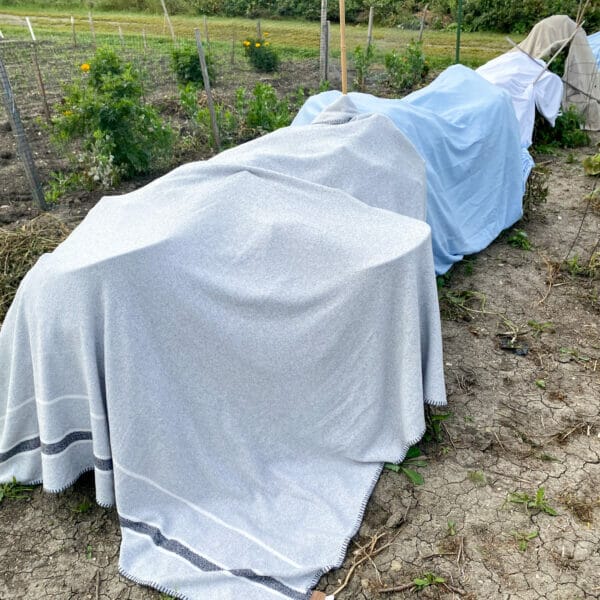
Even if there is frost warning for several days in a row, it’s important to lift off the covers during the day so the plants can breathe and get the light they need. The only exception is if you’re using official row covers meant to allow light, air and moisture to pass through.
PRO TIP: Avoid using plastic sheets. Unless you set up hoops to ensure plastic does not touch the leaves or fruit of plants, plastic sheets because they will transfer the cold to the plant.
4. Harvest What You Can
It’s time to strategize and plan your harvest accordingly. Start harvesting the most sensitive plants first, gather your sheets and blankies for covering those veggies you want to keep a little longer, dust off the canner and make some room in the garage, freezer and pantry for all those veggies!
A frost warning is my cue to pick the basil, peppers, cucumbers and zucchini that are ready to come in. I also pick as many tomatoes and squash as I can, but there are always some that need a little more time – those get covered.
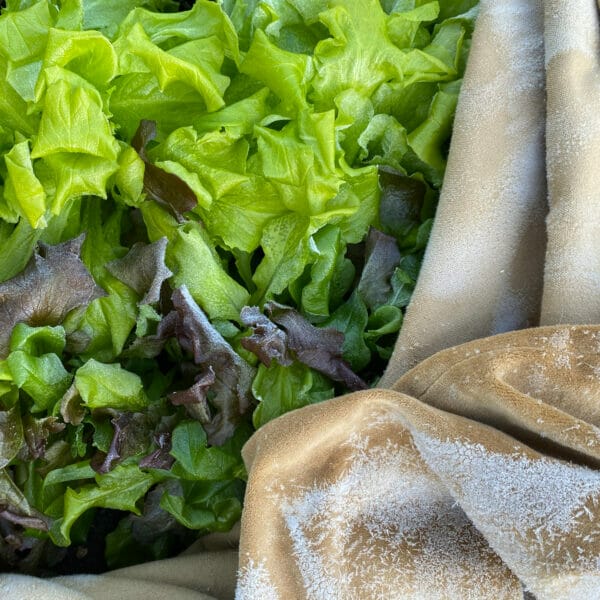
What veggies, herbs or flowers will you fight to protect?
I’d love to hear your frost warning strategy. Oh and gardens covered in sheets always look so pretty! Take a photo, post it on Instagram and tag #getgettys so I can see it and like it!
Getty Stewart is a Professional Home Economist, speaker, frequent media guest and writer dedicated to putting good food on tables and agendas. She is the author of several recipe books on enjoying and preserving fruit, Founder of Fruit Share, a mom and veggie gardener. Sign up to get articles by Getty delivered to your inbox. You’ll get recipes, practical tips and great food information like this.

